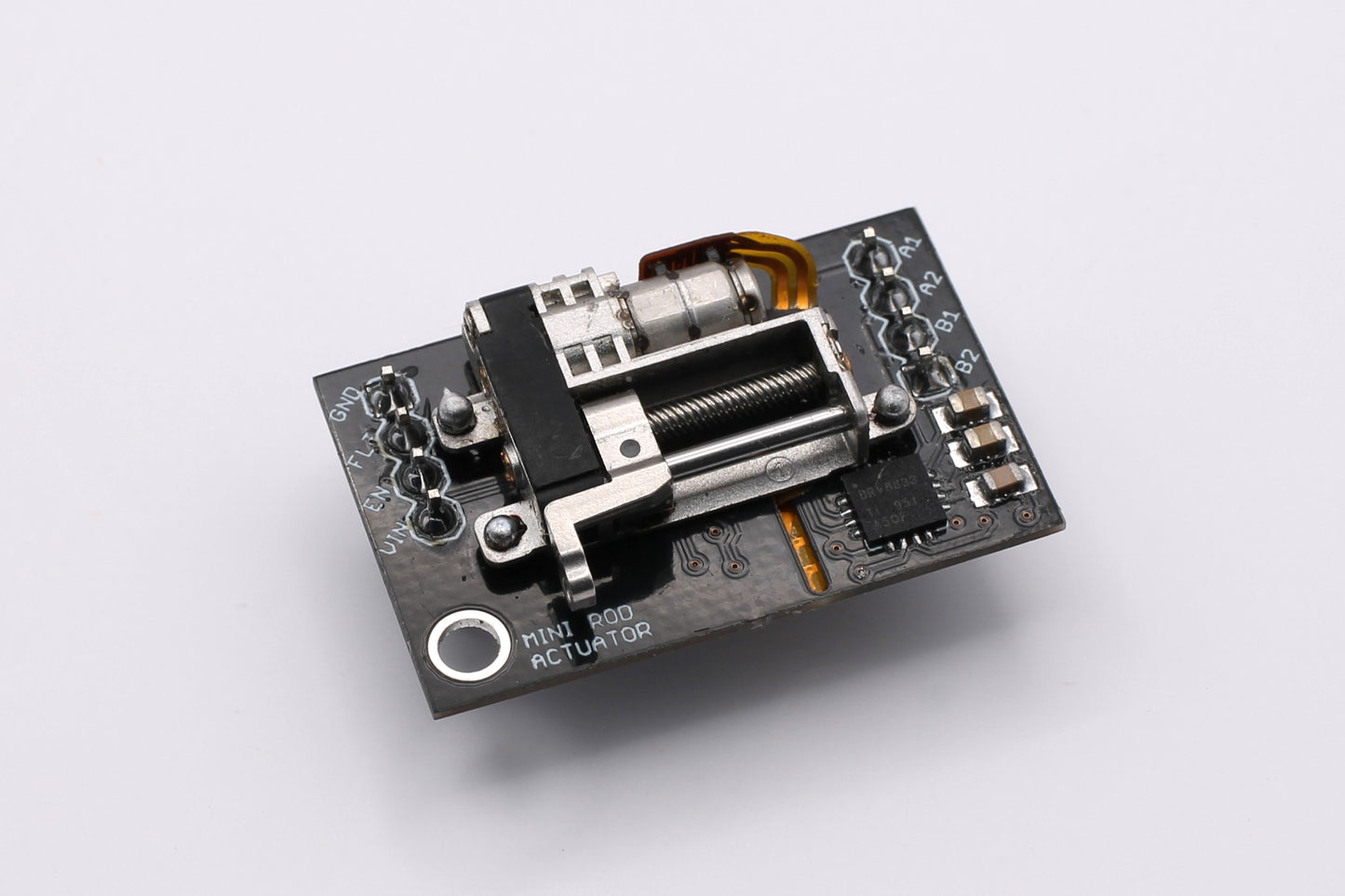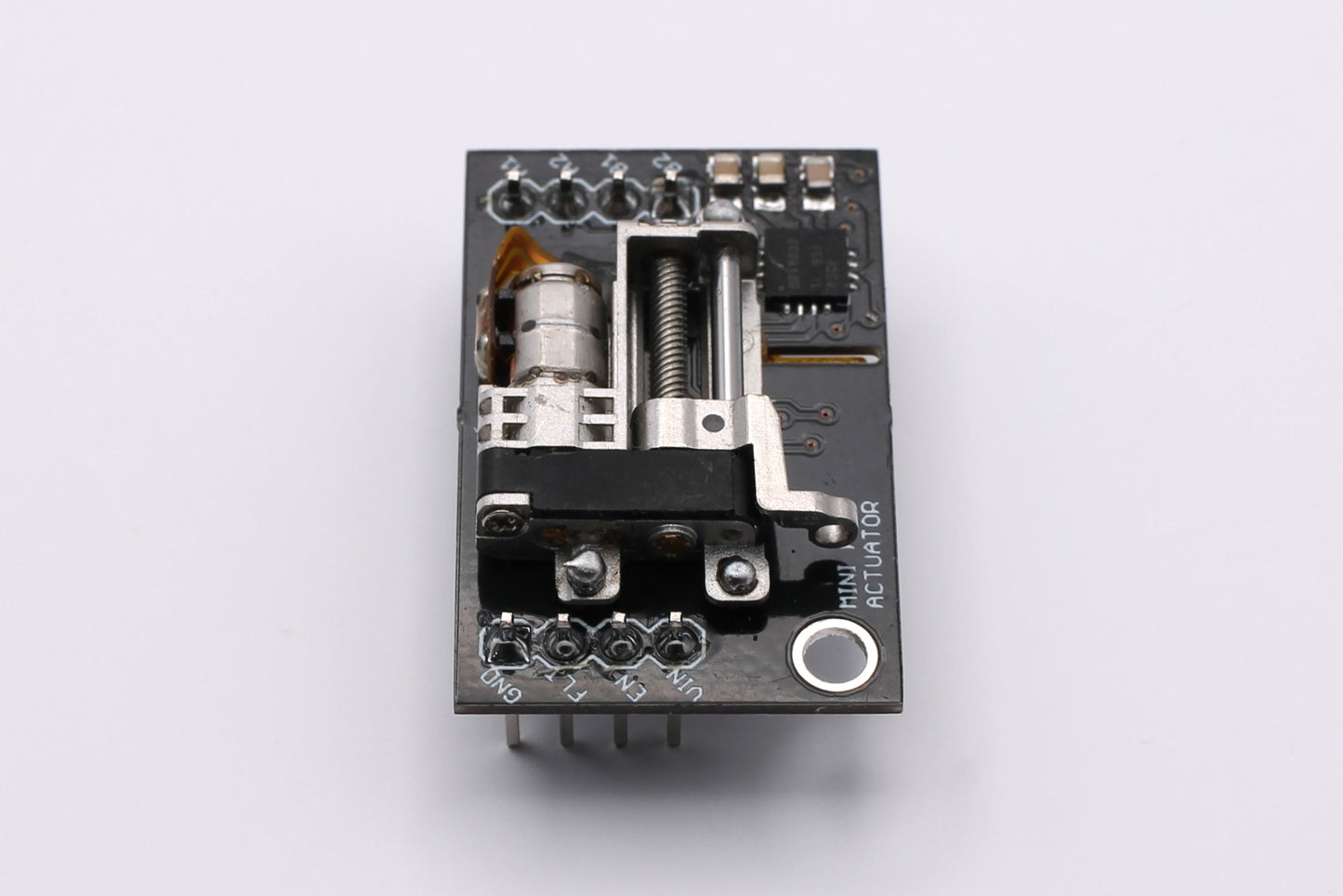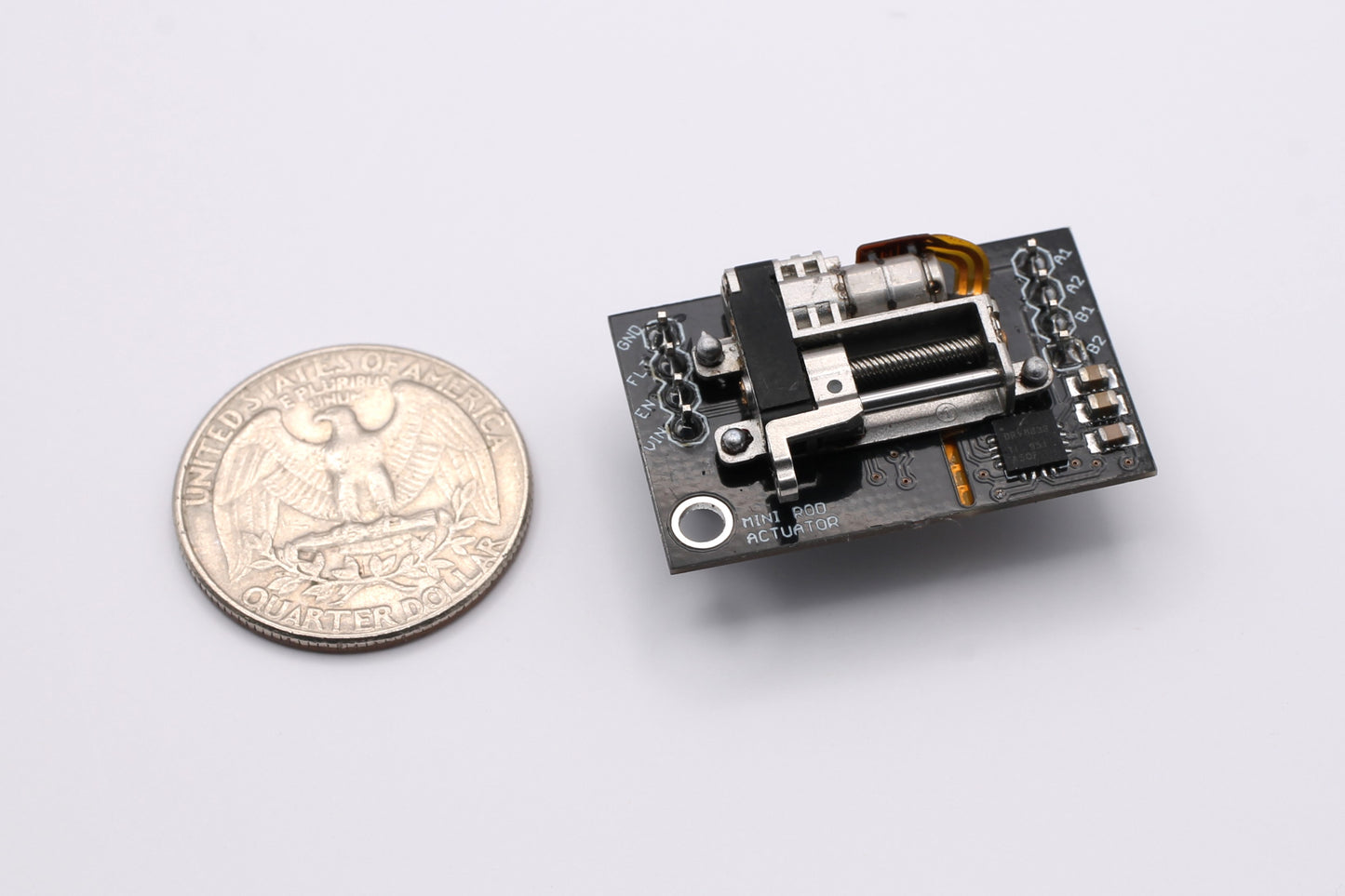Mini Stepper-based Linear Sliding Metal Actuator
Mini Stepper-based Linear Sliding Metal Actuator
Couldn't load pickup availability
What is it?
This is a one-of-a-kind linear actuator breakout board that you won't be able to find anywhere else. It features a metal slider on a threaded rod, that you can precisely control its position, thanks to it being driven by a precision stepper motor. This stepper motor provides incremental steps for the slider, allowing you to precisely control its position and achieve repeatable linear movements (See demo video).
With a convenient hole on the metal slider, you can easily attach an accessory, string or cable to the breakout board. This setup allows you to transform the linear actuator into a versatile mechanism capable of pulling strings or pushing buttons. By integrating this capability into your robotic projects, you can design intricate systems for remote operation, automated interactions, or even combine it with sensors to respond to external stimuli.
This breakout board has an onboard DRV8833 stepper driver IC, so you can use open source stepper motor libraries such as: Stepper The breakout board pinouts are the following:
- GND (Ground)
- FLT (Stepper Fault output)
- EN (Enable)
- VIN (3.3V)
- A1 (stepper input)
- A2 (stepper input)
- B1 (stepper input)
- B2 (stepper input)
Some potential use cases:
Small Robotic Manipulators: Utilize the breakout board to create robotic arms and limbs with precise control over their movements, enabling them to perform delicate tasks, pick-and-place operations, or intricate assembly processes.
Toy Crane with String-Pulling Mechanism: The crane in the toy model would be equipped with a string-pulling mechanism, powered by the Linear Actuator Breakout Board. Strings would be attached to the crane's boom, hook, and rotation mechanism, and routed through the breakout board's metal slider. As a result, users can control the crane's movements by adjusting the slider's position.
Interactive Installations: Incorporate the button-pushing capability to design interactive installations, art projects, or educational exhibits that respond to user input or environmental cues.







